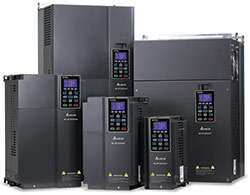Modern Methods of Frequency Control of Electric Motors
Modern frequency control technologies allow for effective monitoring of the speed and torque of an electric motor. When considering asynchronous motors with vector and scalar control types, scalar systems are more popular in today's market.
Scalar Control Systems
Electric drives with scalar control are often used in compressors, fans, and pumps. Such systems find application in the following cases:
- constant support of specific technological parameters over a long period;
- stable operation of the motor shaft is valued.

Scalar Control
Asynchronous motors with scalar control demonstrate stable overload capacity that does not depend on voltage frequency. However, operation at low frequencies may affect the reduction of torque generated by the drive.
Speed control of the motor rotor's rotation is maintained within limits not exceeding 1:10. This helps avoid significant torque losses.
The advantages of scalar control include:
- the simplicity of system implementation.
However, there are also some drawbacks:
- the need to install a speed sensor for normal shaft rotation control;
- inability to control torque on the electric motor shaft;
- inability to adjust speed and torque simultaneously;
Vector Control
The vector control system eliminates the aforementioned drawbacks and is becoming increasingly sophisticated. Modern systems calculate optimal values of speed and torque using special mathematical models, employing only specialized sensors that adjust the phases of the stator.
Depending on the operating conditions of the electric drive, an appropriate variant of vector control is chosen.
The advantages of vector control include:
- precise speed control without the need for a speed sensor;
- stable operation of the asynchronous motor at low frequencies without jerking;
- provision of nominal speed on the shaft even when the motor is off, provided there is a special sensor;
- protection against sudden changes in speed due to quick reaction to load;
- high motor efficiency and reduction of losses associated with magnetization and heating.
However, vector control also has some disadvantages:
- the need for complex mathematical calculations;
- preliminary study of all motor parameters before installing equipment;
- at constant loads, more significant speed fluctuations may be observed compared to the scalar control method.